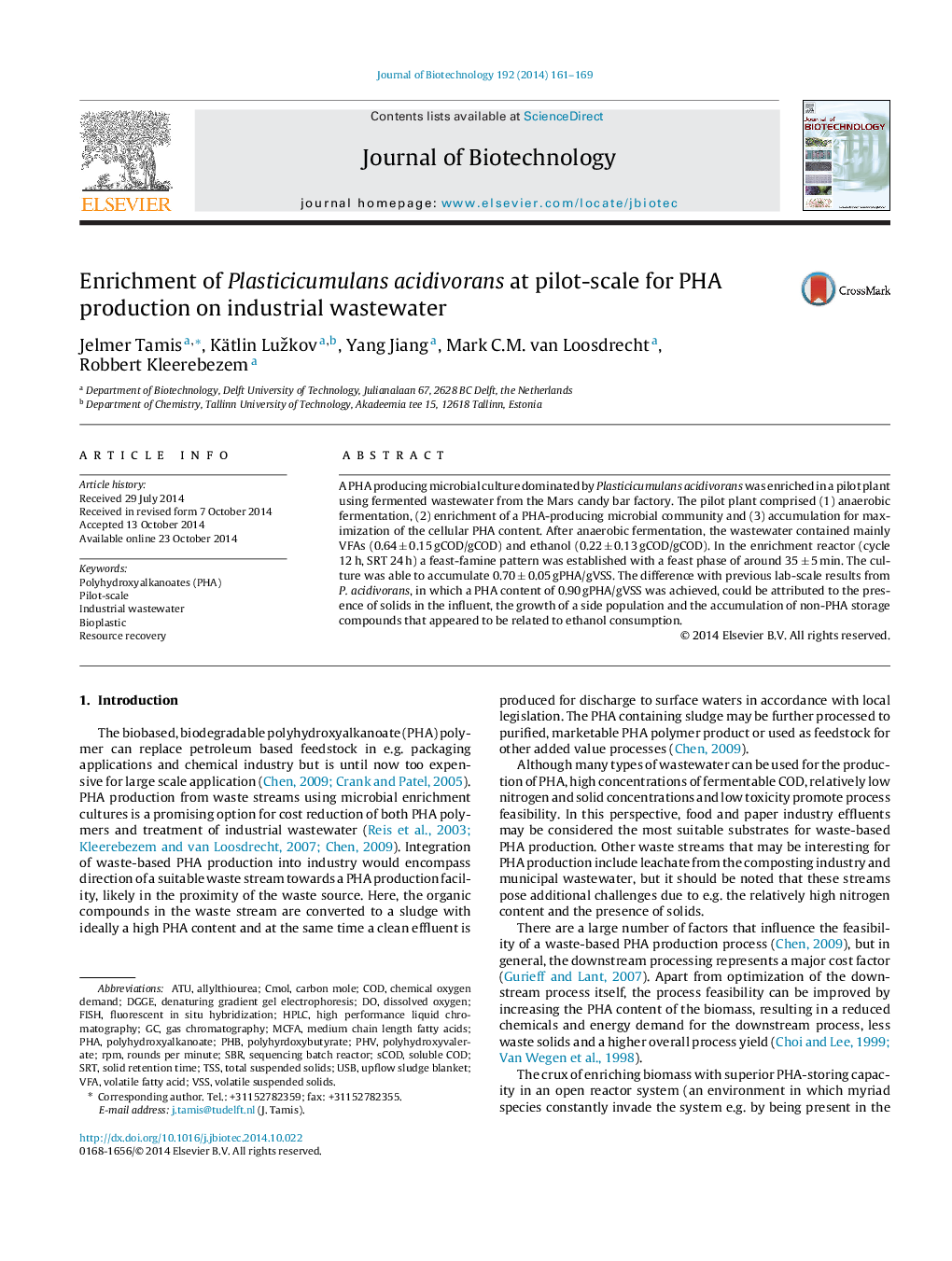| Article ID | Journal | Published Year | Pages | File Type |
|---|---|---|---|---|
| 6491353 | Journal of Biotechnology | 2014 | 9 Pages |
Abstract
A PHA producing microbial culture dominated by Plasticicumulans acidivorans was enriched in a pilot plant using fermented wastewater from the Mars candy bar factory. The pilot plant comprised (1) anaerobic fermentation, (2) enrichment of a PHA-producing microbial community and (3) accumulation for maximization of the cellular PHA content. After anaerobic fermentation, the wastewater contained mainly VFAs (0.64 ± 0.15 gCOD/gCOD) and ethanol (0.22 ± 0.13 gCOD/gCOD). In the enrichment reactor (cycle 12 h, SRT 24 h) a feast-famine pattern was established with a feast phase of around 35 ± 5 min. The culture was able to accumulate 0.70 ± 0.05 gPHA/gVSS. The difference with previous lab-scale results from P. acidivorans, in which a PHA content of 0.90 gPHA/gVSS was achieved, could be attributed to the presence of solids in the influent, the growth of a side population and the accumulation of non-PHA storage compounds that appeared to be related to ethanol consumption.
Keywords
MCFAPolyhydroxyvalerateAllylthioureaPHVSBRATUsRTSCODDGGEPHARPMPHBVFATSSSoluble CODVSsvolatile fatty acidDenaturing gradient gel electrophoresisdissolved oxygenResource recoveryBioplasticchemical oxygen demandrounds per minuteSequencing batch reactorSolid retention timeIndustrial wastewaterfluorescent in situ hybridizationFishtotal suspended solidsPilot-scaleVolatile suspended solidsPolyhydroxyalkanoates (PHA)polyhydroxyalkanoateCodhigh performance liquid chromatographyHPLCGas chromatographyUSB
Related Topics
Physical Sciences and Engineering
Chemical Engineering
Bioengineering
Authors
Jelmer Tamis, Kätlin Lužkov, Yang Jiang, Mark C.M. van Loosdrecht, Robbert Kleerebezem,
